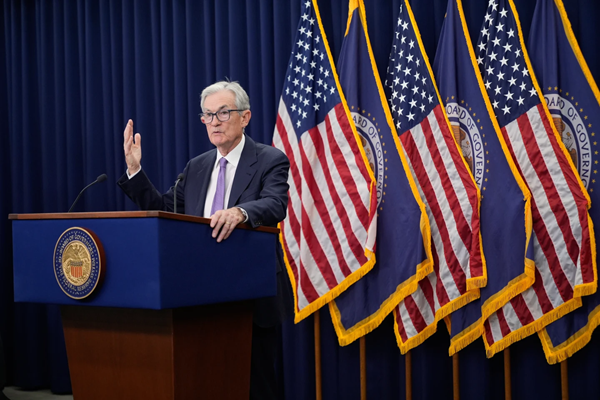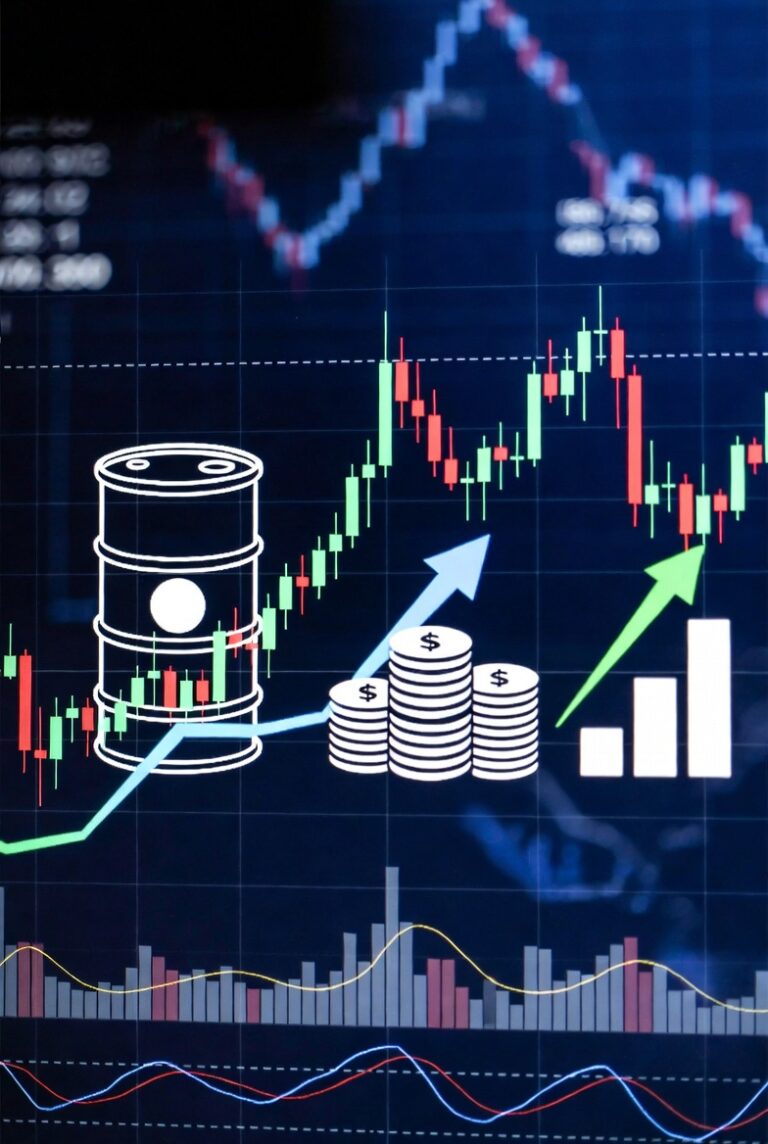
Trump’s May 2025 policies drive economic and market shifts.
At GLHR Investing, we’re dissecting President Donald Trump’s May 2025 actions to understand their profound effects on the U.S. economy and stock market. From escalating trade tensions to securing massive investment deals, Trump’s policies have fueled volatility, with the S&P 500 (SPY) at $513.88, down 4.8% year-to-date. With 3% inflation, a 60% recession risk, and global trade disruptions, how are these moves reshaping economic growth and market performance? Here’s a comprehensive analysis of Trump’s key economic actions in May 2025, their immediate and long-term impacts, and what investors need to know.
- Trump’s Key Economic Actions in May 2025:
- Tariff Policy Escalations:
- China Tariff Threat (May 6): Trump threatened a 50% additional tariff on Chinese goods, effective May 9, if China didn’t rescind its 84% retaliatory tariffs, building on April’s 125% China tariff. This followed exemptions for $102 billion in tech imports (e.g., smartphones, solar cells) on April 30.
- Impact: The threat intensified trade war fears, with Chinese exports to the U.S. down 21% year-over-year in April, per web data. U.S. port activity (e.g., Los Angeles) slowed, signaling supply chain strain, per web data.
- Trade Negotiations and Investment Deals:
- U.S.-UK Trade Framework (May 8): Trump announced a “breakthrough” trade deal with the UK, increasing market access for U.S. agricultural exports by billions, though specifics remain vague. Posts on X claimed it as a “historic” step toward a “golden age.”
- Saudi and Qatar Investments (May 13–14): Trump secured $600 billion from Saudi Arabia and $1.2 trillion from Qatar for U.S. investments, part of a claimed $10 trillion global commitment, though verification is lacking. These focus on manufacturing, AI, and energy, per X posts.
- Impact: The UK deal and investment pledges boosted market sentiment temporarily, with SPY gaining ~1% from May 6–9, per web data. However, unverified claims and reliance on foreign capital raise concerns about execution, per web data.
- Federal Reserve Pressure:
- Powell Criticism and U-Turn (May 2–7): Trump intensified attacks on Fed Chair Jerome Powell, demanding rate cuts on May 2 via Truth Social and suggesting his “termination” earlier in April. On May 7, he backed off, stating no intention to fire Powell, calming markets, per web data.
- Impact: The initial threat sparked a 2.4% SPY drop on May 6, with fears of Fed independence erosion, per web data. The reversal supported a 2.5% SPY gain by May 9, but long-term trust issues linger, per web data.
- Tax and Fiscal Policy Signals:
- Tax Bill Draft (May 6): The House Ways and Means Committee released a $3.7 trillion tax bill draft, permanently extending the 2017 Tax Cuts and Jobs Act (TCJA) rates (10–37%), increasing the child tax credit by $500, standard deduction by $1,500, and estate tax exemption to $15 million. It raises the SALT deduction cap to $30,000 (phased out above $200,000/$400,000 income) and cuts renewable energy subsidies, per web data.
- Impact: The bill’s pro-growth elements (tax cuts, deregulation) could boost corporate earnings 5–10% by 2027, per Morgan Stanley, but deficit concerns ($1 trillion over a decade) raise bond yield risks (10-year at 4.28%), per web data.
- Other Economic Moves:
- Corporate Earnings Emphasis: Trump urged focus on Q1 2025 earnings (8.1% S&P 500 growth expected), downplaying tariff volatility, per web data. However, corporate guidance remains cautious due to trade uncertainty, per web data.
- Retail CEO Engagement: Trump met with Walmart, Target, and Home Depot CEOs to address tariff fallout, signaling responsiveness to business concerns, per web data. This followed warnings of supply chain disruptions, per web data.
- Tariff Policy Escalations:
- Economic Impacts:
- Immediate Effects:
- GDP and Growth: Q1 2025 GDP contracted by -0.3%, a sharp reversal from 2.4% in Q4 2024, driven by tariff-induced import surges (businesses stockpiling) and reduced government spending, per web data. Economists forecast 1.9% growth for 2025, down from 2.8% in 2024, per web data.
- Inflation: Inflation held at 3% in March, but tariff threats and 6.7% consumer expectations signal a rise to 4% by 2026, per Powell’s warnings. Consumer prices (e.g., eggs up 20% YTD) reflect pre-tariff stockpiling, per web data.
- Consumer Sentiment: The Conference Board Index hit a 12-year low (50.8), with a 16% year-over-year drop, reflecting tariff fears and higher costs, per web data. Retail spending fell 13%, curbing economic activity, per prior analyses.
- Employment: Trump added 345,000 jobs (188,000 non-government, 9,000 manufacturing), but rising unemployment fears (44% chance, New York Fed) signal labor market strain, per web data.
- Long-Term Effects:
- Trade and Growth: Tariffs could reduce GDP by 6–8% and wages by 5–7% over a decade, with a $22,000–$58,000 lifetime loss for middle-income households, per Penn Wharton. However, $4.5–$5.2 trillion in tariff revenue over 10 years could offset deficits if used wisely, per web data.
- Inflation and Costs: Persistent tariffs may sustain 4% inflation, raising consumer prices 2.3% (e.g., $3,800/year per household), per Penn Wharton. This could suppress demand for 2–5 years, per web data.
- Reshoring: Tariffs aim to boost domestic manufacturing (17.4% of global output in 2023, down from 28.4% in 2001), potentially adding 2.8 million jobs by 2030, per 2024 studies, but short-term disruptions dominate, per web data.
- Fiscal Strain: Tax cuts ($3.7 trillion bill) could widen deficits by $1 trillion, raising bond yields (4.5–5% projected) and borrowing costs, potentially slowing growth for 5–10 years, per Tax Foundation.
- Immediate Effects:
- Stock Market Impacts:
- Immediate Effects (May 1–12, 2025):
- S&P 500 (SPY): SPY fell ~0.87% from May 1 (~$518.40, April 30 close) to May 9 ($513.88), with a 2.4% drop on May 6 (tariff threat, Fed concerns) and a ~1% gain by May 9 (trade deal optimism), per real-time data and prior analyses. Intraday volatility hit $508.55–$520, per web data.
- Sector Performance:
- Technology: Down ~2%, with NVIDIA (-3%) and Tesla (-5%) hit by chip supply fears and China’s rare earth bans, per web data. SPLRCT lagged, per Morningstar.
- Consumer Discretionary: Down ~1.5%, with retail (e.g., Nike, Amazon) facing import cost pressures (XLY ETF down), per web data.
- Defensive Sectors: Utilities (SPLRCU) and staples (SPLRCS) up ~1–2%, gold at $3,300/ounce (+3%), reflecting safe-haven demand, per web data.
- Other Indices: Nasdaq 100 (QQQ) down ~2%, Russell 2000 (IWM) down ~2.5% (19% YTD drop), Dow Jones flat at ~41,274.75, per X posts and web data.
- Sentiment: X posts noted a “mixed” market, with @grok citing tariff volatility and @sallore102 highlighting a V-shaped recovery driven by the UK deal, per web data.
- Long-Term Effects (1–5 Years):
- Market Volatility: Tariffs and Fed pressure could sustain high volatility (VIX ~35) for 1–3 years, with SPY potentially dropping 10–15% to $450–$480 by 2026 if trade wars persist, per J.P. Morgan. Trade deals could stabilize SPY at $550–$600 by 2027, per Goldman Sachs’ 9% forecast for 2025.
- Sector Divergence:
- Domestic Manufacturing: Steel (Nucor, +10% YTD) and energy (Chevron) may see 20–30% revenue gains from reshoring, lasting 5–10 years, per Goldman Sachs.
- Technology and Retail: Margin pressures from 20–30% cost hikes could cut earnings 10–20% for tech (e.g., Apple, NVIDIA) and retail (e.g., Nike), per web data.
- Defensive Sectors: Utilities, staples, and healthcare may outperform for 1–3 years, with 5–10% annual gains, as recession fears drive safe-haven demand, per Morningstar.
- Investment Pledges: Unverified $10 trillion commitments (e.g., $1.8 trillion from Saudi Arabia, Qatar) could boost manufacturing and AI stocks (e.g., Astera Labs) by 2027 if realized, but skepticism persists due to lack of contracts, per web data.
- Bond Yields and Valuations: Rising yields (4.5–5% projected) from deficit-funded tax cuts could depress equity valuations, especially tech, for 3–5 years, per web data. A weaker dollar (down 9% YTD) may aid exporters but hurt multinationals, per web data.
- Immediate Effects (May 1–12, 2025):
- Investor Considerations:
- Economic Outlook:
- Short-Term (3–6 Months): GDP contraction (-0.3%) and tariff uncertainty may curb growth to 1.9% in 2025, with inflation rising to 4%, per web data. Trade deals (e.g., U.S.-UK) could provide relief, but consumer spending (down 13%) remains weak, per prior analyses.
- Long-Term (1–5 Years): Reshoring may add jobs (2.8 million by 2030), but GDP losses (6–8%) and higher consumer costs ($3,800/year) could persist without trade resolutions, per Penn Wharton. Tax cuts may boost earnings but risk deficits, per web data.
- Stock Market Strategy:
- Is It a Good Time to Buy?: Selective buying in defensive and domestic stocks is advisable, given SPY’s 8% discount (Morningstar) and defensive sector strength. High volatility and recession risks make broad market buys risky, per Schwab.
- Buy Recommendations:
- Defensive Stocks: Utilities (e.g., Vistra, VST, +261.3% from April 2024, 2.1% yield), staples (e.g., Walmart, WMT, ~$80), and healthcare (e.g., Pfizer, PFE, 7.6% yield) for 5–10% annual gains, per prior analyses.
- Domestic Manufacturing: Steel (Nucor, NUE, ~$160) and energy (ONEOK, OKE, 5.8% yield) for tariff-driven upside (20–30% by 2027), per Goldman Sachs.
- ETFs: Vanguard High Dividend Yield (VYM, 3.59% yield) or iShares U.S. Infrastructure (IFRA) for diversified exposure, per Seeking Alpha.
- Avoid: Tech (e.g., NVIDIA, Apple, down 2–3%) and import-heavy retail (e.g., Nike, Amazon) due to tariff costs (20–30%), per Schwab. XLK and XLY ETFs face downside, per web data.
- Timing: Buy on dips (SPY near $500) for value, per Morningstar. Dollar-cost average to manage volatility, per Edward Jones.
- Monitor: Q1 earnings (through May 15), U.S.-China trade talks (May 10–11), and Fed’s June 17–18 meeting for rate signals, per web data.
- Risks:
- Tariff escalations (e.g., 50% China tariff) or failed trade talks could drive SPY down 5–10% by July, per Schwab.
- A recession (60% risk) could depress cyclical stocks (tech, retail) for 2–3 years, per J.P. Morgan.
- Deficit-driven yield spikes (4.5–5%) and Fed independence concerns may raise borrowing costs, impacting valuations long-term, per web data.
- Economic Outlook:
- Why It Matters: Trump’s May 2025 moves—escalating tariffs, securing trade and investment deals, and pressuring the Fed—have intensified economic uncertainty, with GDP contracting (-0.3%) and SPY volatile (-0.87% May 1–9). Long-term, domestic sectors like steel and energy may thrive, but tech and retail face challenges, with SPY’s trajectory hinging on trade resolutions. In a market down 15.6% YTD, selective investing in high-yield, tariff-resistant stocks is crucial. At GLHR Investing, we’re here to guide you through this economic storm, aligning your portfolio with resilient opportunities.
Invest smart with GLHR Investing—let’s build wealth in turbulent times!
Disclaimer: GLHR Investing is not a financial adviser; please consult one.








